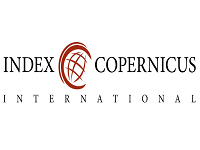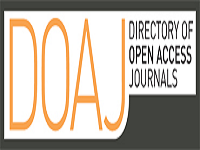The Influence of Coordination on Employee Work Effectiveness
Keywords:
Coordination, Effectiveness, Inter-Sector, Public Service OfficeAbstract
This study aims to determine the effect of coordination on the effectiveness of employee work at the Kabila District Office, Bone Bolango Regency. This research method uses a survey method with a quantitative research approach. Quantitative methods are directed at solving problems by presenting or describing the results of the study as they are. The data collection technique uses a questionnaire that will be tested for validity and reliability. The data analysis method in this study uses path analysis and the calculation operation uses the SPSS 20 program. The number of respondents in this study was 35 people. Based on the results of the study, it shows that coordination in the form of vertical coordination (X1) and horizontal coordination (X2) simultaneously affects the effectiveness of employee work (Y) at the Kabila District Office, Bone Bolango Regency, which is 0.742 (74.2%). Coordination activities apply to all work units, where each work unit carried out by various people can take place harmoniously and in balance in the desired direction, so a leader must be able to carry out a coordination action. Coordination in the form of vertical coordination (X1) partially influences the effectiveness of employee work (Y) at the Kabila Sub-district Office, Bone Bolango Regency, which is 0.501 or 50.1%. This means that vertical coordination in the form of giving work instructions to employees has been running well. Coordination in the form of horizontal coordination (X2) partially influences the effectiveness of employee work (Y) at the Kabila Sub-district Office, Bone Bolango Regency, which is 0.372 or 37.2%. This means that in coordinating unification actions or activities, direction given to activities at the same organizational level (apparatus) has not been carried out optimally.
Downloads
References
1. Abdussamad, S. N., Abdussamad, Z., Reza, W., & Aqmal, I. U. (2024). Implementation of Path Analysis for Modeling the Influence of Organizational Culture on Work Productivity. Jurnal Pijar Mipa, 19(4), 710-714.
2. Ahsan, A. K., & Panday, P. K. (2013). Problems of coordination in field administration in Bangladesh: does informal communication matter?. International Journal of Public Administration, 36(8), 588-599.
3. Ahsan, A. K., & Panday, P. K. (2023). Looking into inter-organizational coordination from a cultural perspective: A study on public organizations at the subnational level in Bangladesh. Local Development & Society, 4(1), 229-247.
4. Bandura, A. (2023). Cultivate self‐efficacy for personal and organizational effectiveness. Principles of Organizational Behavior: The Handbook of Evidence‐Based Management 3rd Edition, 113-135.
5. Bataweya, B., Abdussamad, Z., & Tohopi, R. 2023. Kinerja Pegawai Dalam Meningkatkan Kualitas Pelayanan. Jambura Journal of Administration and Public Service. 4 (1). 30-40.
6. Boontanon, N., & Sonsri, G. (2023). District-level collaboration for improving quality of life of older people in Thailand. Lex localis-Journal of Local Self-Government, 21(4), 937-958.
7. Bouckaert, G., Peters, B. G., & Verhoest, K. (2010). The coordination of public sector organizations. Hampshire: Palgrave Macmillan.
8. Canton, H. (2021). United Nations Development Coordination Office. In The Europa Directory of International Organizations 2021 (pp. 176-178). Routledge.
9. Castañer, X., & Oliveira, N. (2020). Collaboration, coordination, and cooperation among organizations: Establishing the distinctive meanings of these terms through a systematic literature review. Journal of management, 46(6), 965-1001.
10. Chadwick, I. C., & Raver, J. L. (2015). Motivating organizations to learn: Goal orientation and its influence on organizational learning. Journal of management, 41(3), 957-986.
11. Chisholm, D. (1992). Coordination without hierarchy: Informal structures in multiorganizational systems. Univ of California Press.
12. Choong, K. K. (2014). The fundamentals of performance measurement systems: A systematic approach to theory and a research agenda. International journal of productivity and performance management, 63(7), 879-922.
13. Fuchs, C., & Reichel, A. (2023). Effective communication for relational coordination in remote work: How job characteristics and HR practices shape user–technology interactions. Human Resource Management, 62(4), 511-528.
14. Gagné, M. (2018). From strategy to action: Transforming organizational goals into organizational behavior. International Journal of Management Reviews, 20, S83-S104.
15. Handayaningrat, Soewarno. 2009. Pengantar Studi Ilmu Administrasi dan Manajemen. CV. Haji Masagung. Jakarta.
16. Handoko, T. H. 2007. Manajemen Personalia dan Sumber Daya Manusia. BPFE. Yogyakarta.
17. Hasibuan, M. 2009. Manajemen Sumber Daya Manusia. Edisi Revis. PT. Bumi Aksara. Jakarta.
18. Kelso, J. A. (2013). Coordination dynamics. In Encyclopedia of complexity and systems science (pp. 1-41). Springer, New York, NY.
19. McNamara, M. (2012). Starting to untangle the web of cooperation, coordination, and collaboration: A framework for public managers. International Journal of Public Administration, 35(6), 389-401.
20. Michela, J. L., & Burke, W. W. (2000). Organizational culture and climate in transformations for quality and innovation. Handbook of organizational culture and climate, 225-244.
21. Mondiana, Y. Q., Pramoedyo, H., & Sumarminingsih, E. (2018). Structural equation modeling on Likert scale data with transformation by successive interval method and with no transformation. Int. J. Sci. Res. Publ, 8(5), 398-405.
22. Naqash, N. A. (2025). Management Principles and Organizational Behaviour: A Holistic Approach. Academic Guru Publishing House.
23. Noor, M., & Akhmad, B. A. (2022). The Head of Sub-District Roles In Coordinating The Tasks of Administrating Street Vendors In Kelua, Tabalong District, Indonesia. International Journal of Politic, Public Policy and Environmental Issues, 2(02), 109-121.
24. Okhuysen, G. A., & Bechky, B. A. (2009). 10 coordination in organizations: An integrative perspective. Academy of Management annals, 3(1), 463-502.
25. Provan, K. G., Beyer, J. M., & Kruytbosch, C. (1980). Environmental linkages and power in resource-dependence relations between organizations. Administrative science quarterly, 200-225.
26. Powell, T. C., & Dent‐Micallef, A. (1997). Information technology as competitive advantage: The role of human, business, and technology resources. Strategic management journal, 18(5), 375-405.
27. Sokolić, D. (2022). Remote work and hybrid work organizations. In Economic and social development (pp. 202-213). Varazdin Development and Entrepreneurship Agency and University North.
28. Wibawa, Samodra. 2007. Beberapa Konsep Untuk Administrasi Negara. Liberty. Yogyakarta.



 .
.









